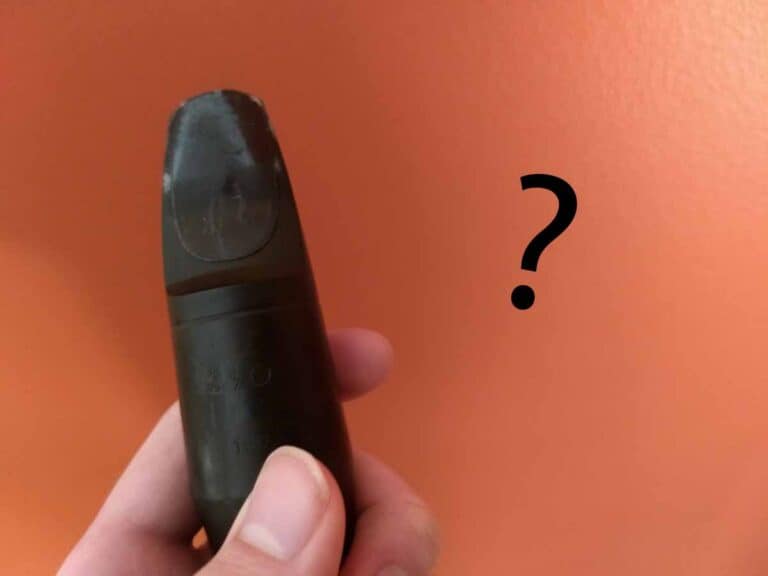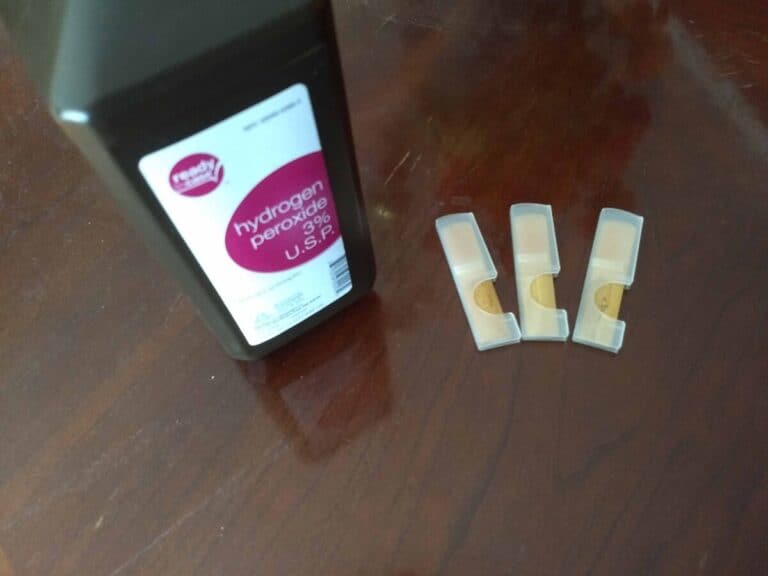Can You Boil a Saxophone Mouthpiece?
Boiling may seem at first like a tempting solution to the germs and other gross stuff that sometimes winds up on mouthpieces. However, it is a terrible idea and it is one that you should not try under any circumstances.
You should never boil your saxophone mouthpiece. When the hard rubber of the mouthpiece is exposed to intense heat, it may crack or deform in a way that renders it unplayable. Even a metal mouthpiece is likely to incur some damage when boiled.
Why you should never boil your mouthpiece
Most saxophone mouthpieces are made of ebonite, also known as hard rubber. If you boil hard rubber, it is likely to melt to some extent. The melting point of rubber, after all, isn’t too far off from the boiling point of water.
Naturally, your mouthpiece will become completely useless if it melts at all. Mouthpieces rely on their shape (both internal and external) to produce their specific quality of sound. If the mouthpiece warps, it will play completely differently. Given that the mouthpiece may simply crack in boiling water, however, you’d be lucky if you can play it at all.
Rubber also releases toxic fumes when it is melted. In boiling your mouthpiece, you may put your life at stake – not just your mouthpiece.
Even if your mouthpiece is metal, you still shouldn’t boil it. Sure, metal may be substantially more resistant to heat than hard rubber. Even so, however, metal saxophone mouthpieces are typically made of softer metals such as brass. They will still expand when heated (and contract when cooling), and even a small change in shape could cause permanent damage.
Again, the shape of the saxophone mouthpiece is critical to the way that it plays. Changing the shape even a little bit could leave it playing completely differently. While the cooling process will reverse the expansion of the mouthpiece, it won’t do so in a precise way. The shape will most likely be different than it was before you boiled it.
So don’t boil your mouthpiece. Ever.
What to do instead of boiling
You can clean your mouthpiece with warm water and a mouthpiece brush. Appling baby shampoo to the brush will give you a stronger cleaning effect, and as a disinfectant you can gently scrub the mouthpiece with white vinegar.
Obviously boiling has been ruled out, but you may still have questions about how exactly you should go about cleaning your mouthpiece if not through melting it into a useless pile of hard rubber.
Getting the gunk out
A simple and effective solution is to just use warm water. Don’t use hot water (for reasons we just discussed) nor cold water. As you rinse the mouthpiece with warm water, gently scrub it with a mouthpiece brush. You can find one here, or you can use a toothbrush as a substitute. Mouthpiece brushes are better, however, as they make it easier to clean the inside of the mouthpiece.
Warm water and a brush by themselves will help you get most of the gunk out of your mouthpiece. Sometimes, however, you may need something a little stronger. In this case, I recommend baby shampoo. It will get the job done while causing no damage whatsoever to the mouthpiece.
The main reason I recommend baby shampoo is because it is gentle and non-abrasive. Abrasive cleaners should only be used minimally on mouthpieces. Preferably, you shouldn’t have to use them at all.
Disinfecting the mouthpiece
You can disinfect your mouthpiece by gently scrubbing it with diluted white vinegar or hydrogen peroxide and then rinsing it off. These will kill the germs, but take care to use them sparingly or you will risk discoloring your mouthpiece.
Disinfecting a saxophone mouthpiece can be tricky because many disinfectants risk causing minor damage to the mouthpiece. Fortunately, they usually won’t render the mouthpiece unplayable (as boiling would). Even so, they are generally best avoided unless absolutely necessary.
Of course, it is sometimes necessary to disinfect your mouthpiece, and it is worth knowing what you can use (and how to use it) if necessary. The technique I’m offering here is one that I find to be highly effective both for cleaning and disinfecting a mouthpiece, though rarely necessary.
Grab a bottle of either white vinegar or hydrogen peroxide. White vinegar is typically more effective. Partially fill a small container with either the vinegar or hydrogen peroxide, then dilute it with water so that the container is about 50% water. Then, dip your mouthpiece brush into the container and gently scrub the mouthpiece.
After you’ve scrubbed the entire mouthpiece with either the vinegar or hydrogen peroxide, don’t forget to rinse the mouthpiece. You don’t want to leave the vinegar/hydrogen peroxide on it, as those can cause discoloration if the mouthpiece is exposed to them in large quantities or for extended periods of time.
You can rinse the mouthpiece with warm water, just like you washed it with earlier.
Conclusion
Boiling a saxophone mouthpiece genuinely has to be one of the worst ideas in existence. Fortunately, you managed to make it to this article in time to prevent you from doing so. And if you already boiled your mouthpiece… I’m so sorry.
That being said, I hope you learned not only the importance of not boiling your mouthpiece, but also the techniques which you can use as a much better substitute.
And finally, I hope that you enjoy continuing to have a functional mouthpiece. Assuming, of course, that you haven’t already boiled it. You’re welcome.







